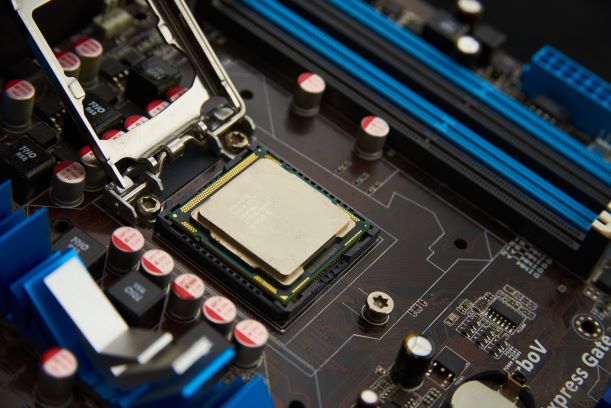Everyone needs to start somewhere. Technology is no exception. Some assume that because we’re living in the 21st century that we all know everything there is to know to computers. But I can’t count the number of times I’ve have had salespeople at big box stores try to sell me a CPU when I wanted a computer, or worse yet, an external hard drive when I was looking for memory. Maybe they were anticipating the customer’s need, or maybe they just didn’t know what they were talking about. Either way it demonstrates the need to learn basic computer terminology.

Photo by Lenharth Systems from StockSnap
Basic Computer Terminology.
- The box that sits on or under your desk is a Computer, not a CPU.
- The CPU is the chip that is the heart of the computer.
- Computers are equipped with RAM or Random Access Memory. This is the memory that is used when programs are running. RAM gets wiped clean when you shut down the computer
- The Hard Disk Drive is your permanent storage location. When you install an application (app for short) or save a file you’re working on it is stored on the Hard Disk Drive. You may also hear it referred to a Hard Drive, Hard Disk, HD, or HDD. When you’re looking to buy a new computer, they will likely describe the Hard Disk Drive Capacity as HDD.
- Hardware is an all inclusive term. It refers to everything used or needed in a specific computer setup. It includes the computer, monitor, keyboard, mouse and other physical components and cables.
- Software refers to the programs and applications that make the computer useful. The software is not physical by nature, but is really just a series of instructions that are interpreted by the cpu to provide the results desired by the programmer. There are two primary types of software used by every computer; the Operating System and the applications.
- The Operating System or OS is in fact a software program that enables the computer to operate. It controls all of the hardware, such as receiving the input from the keyboard, encoding it into characters we can read, then sending that information to the monitor where it is displayed. The OS allows the applications to run and gives them access to the hardware so they can make calculations, display information, save and print files. Some popular operating systems are Windows, IOS, or linux. Be careful to choose the operating system that will run the applications you need.
One benefit of learning the proper names for the various components of a computer is that you will know if the salesperson or computer repair guy you’re talking to is competent. If you’re paying someone to fix your machine and they don’t know what the parts are, you’re not going to get a good result. Just like hiring an electrician who isn’t licensed, you just don’t know how the job will turn out.
If you found this helpful or something is unclear, let me know in the comments.
